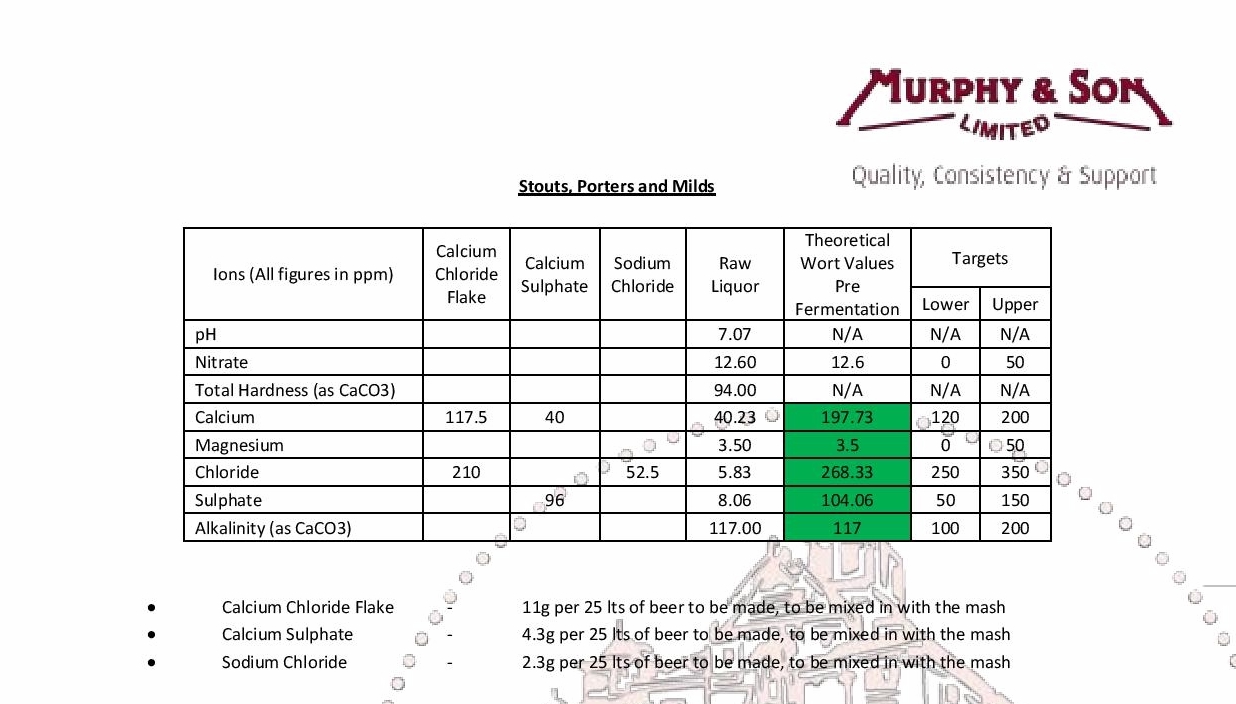Possibly one the most important sentences in the "Handbook of Brewing", a book for students of brewing and professionals, not one by amateurs for amateurs, is copied below.
Without question, water is the principal ingredient of beer. In reality, the “water” supplied to a brewery is actually a dilute solution of various salts, in which small quantities of gases and organic compounds may also be dissolved.
Regularly here we see advice to get rid of those salts and attendant minor ions. Amongst many aspects that are rarely (if ever) explained here, but covered in that world renown reference book, is the importance of FAN, the Free Amino Acids extracted from the endosperm in the mash, essential for yeast and good fermentation, enabled by the presence of sufficient calcium. So much happens in the mash, yet has become imagined as a time for throwing in acid to correct a natural reaction, then all is perfect once the wrong is righted and the timer sounds. How has brewing come to this?
Why are calcium salts so often suggested or perceived as flavoring by some American homebrewers? They are essential ingredients for a process, but only if known why and how. The insane assumption that a calcium salt passes through a mash, underback, boil, hopback, fermentation, conditioning and carbonation as a non-participating, unaffected, inert flavor, that the same result is achieved by adding it to a finished beer only serve to demonstrate a lack of knowledge of a complex process. How little must anyone know or think of the masses of chemical and biological reactions to hold a contrary view to the latest bible on brewing?
Currently, 60% of beers consumed in the world are made by just 4 companies. Do they make the best beers. If your answer is yes, then it's quite likely my beer isn't for you and my argument lost, but some time past, British drinkers reacted to being faced with bland alcoholic flavored beverages. In 1980 UK was down to 142 breweries and USA had 92, but with 76 times the land mass of out few little islands, so were proportionally spoilt for choice with our beers.
I wonder how many offering advice for brewing British style beers ever sat in a decent British pub to be faced with choice of a dozen or more hand-pulled beers? A pint of fresh hand-pulled British beer is a joy to behold. It is not pasteurized, it is not filtered, it is not artificially carbonated with CO2. It is live, it contains yeast while beautifully clear, the carbonation is natural, it is served at cellar temperature allowing unfrozen taste buds free reign through malt and hop and never hearing the word minerally mentioned in a lifetime. British beers are brewed to British profiles as publicized.
Who can have enjoyed a traditional British beer to claim that a few grams of near tasteless calcium salts are a spoiler when mixed in as many pounds of malted barley loaded with many times more potassium, magnesium and phosphates? Someone who either doesn't like or has not correctly brewed a traditional British beer?












































![Craft A Brew - Safale S-04 Dry Yeast - Fermentis - English Ale Dry Yeast - For English and American Ales and Hard Apple Ciders - Ingredients for Home Brewing - Beer Making Supplies - [1 Pack]](https://m.media-amazon.com/images/I/41fVGNh6JfL._SL500_.jpg)



